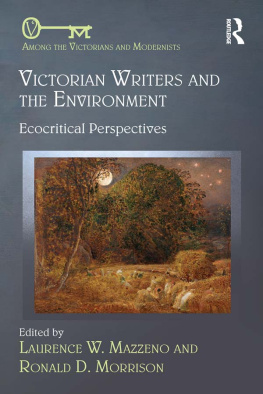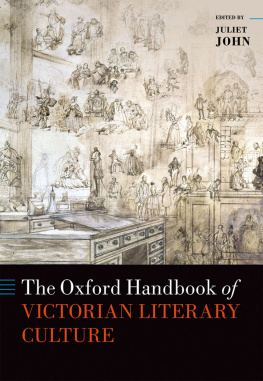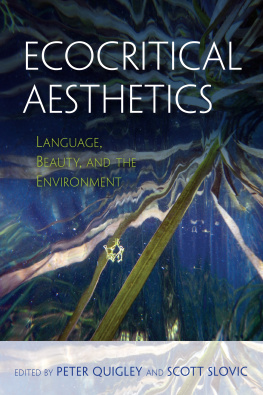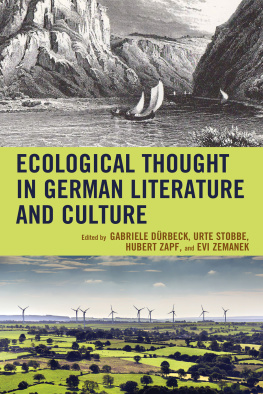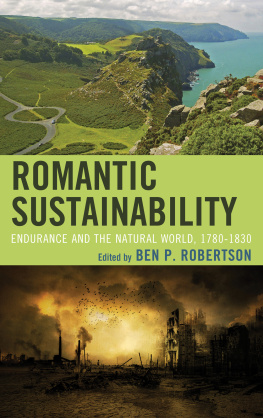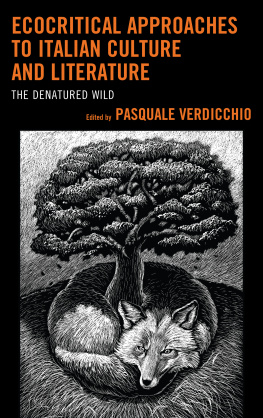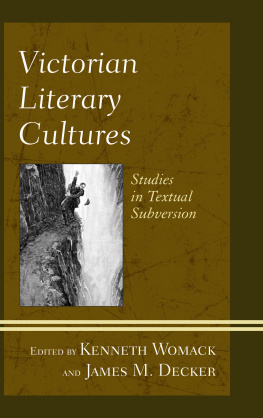Victorian Writers and the Environment
Applying ecocritical theory to the work of Victorian writers, this collection explores what a diversity of ecocritical approaches can offer students and scholars of Victorian literature, at the same time that it critiques the general effectiveness of ecocritical theory. Interdisciplinary in their approach, the chapters take up questions related to the nonhuman, botany, landscape, evolutionary science, and religion. The contributors cast a wide net in terms of genre, analyzing novels, poetry, periodical works, botanical literature, life-writing, and essays. Focusing on a wide range of canonical and noncanonical writers, including Charles Dickens, the Bronts, John Ruskin, Christina Rossetti, Jane Webb Loudon, Anna Sewell, and Richard Jefferies, Victorian Writers and the Environment demonstrates the ways in which nineteenth-century authors engaged not only with humans interaction with the environment during the Victorian period, but also how some authors anticipated more recent attitudes toward the environment.
Laurence W. Mazzeno is President Emeritus at Alvernia University, USA.
Ronald D. Morrison is Professor of English at Morehead State University, USA.
Among the Victorians and Modernists
Edited by Dennis Denisoff
This series publishes monographs and essay collections on literature, art, and culture in the context of the diverse aesthetic, political, social, technological, and scientific innovations that arose among the Victorians and Modernists. Viable topics include, but are not limited to, artistic and cultural debates and movements; influential figures and communities; and agitations and developments regarding subjects such as animals, commodification, decadence, degeneracy, democracy, desire, ecology, gender, nationalism, the paranormal, performance, public art, sex, socialism, spiritualities, transnationalism, and the urban. Studies that address continuities between the Victorians and Modernists are welcome. Work on recent responses to the periods such as Neo-Victorian novels, graphic novels, and film will also be considered.
Arthur OShaughnessy, A Pre-Raphaelite Poet in the British Museum
By Jordan Kistler
Dialectics of Secrecy and Disclosure in Victorian Fiction
By Leila May
Louise Jopling
By Patricia de Montfort
Victorian Writers and the
Environment
Ecocritical Perspectives
Edited by Laurence W. Mazzeno and
Ronald D. Morrison
First published 2017
by Routledge
2 Park Square, Milton Park, Abingdon, Oxon OX14 4RN
and by Routledge
711 Third Avenue, New York, NY 10017
Routledge is an imprint of the Taylor & Francis Group, an informa business
2017 selection and editorial matter, Laurence W. Mazzeno and Ronald D. Morrison; individual chapters, the contributors.
The right of Laurence W. Mazzeno and Ronald D. Morrison to be identified as the author of the editorial material, and of the authors for their individual chapters, has been asserted in accordance with sections 77 and 78 of the Copyright, Designs and Patents Act 1988.
All rights reserved. No part of this book may be reprinted or reproduced or utilised in any form or by any electronic, mechanical, or other means, now known or hereafter invented, including photocopying and recording, or in any information storage or retrieval system, without permission in writing from the publishers.
Trademark notice: Product or corporate names may be trademarks or registered trademarks, and are used only for identification and explanation without intent to infringe.
British Library Cataloguing in Publication Data
A catalogue record for this book is available from the British Library
Library of Congress Cataloging in Publication Data
Names: Mazzeno, Laurence W., editor. | Morrison, Ronald D., editor.
Title: Victorian writers and the environment: ecocritical perspectives / edited by Laurence W. Mazzeno and Ronald D. Morrison. Description: New York: Routledge, 2017. | Series: Among the Victorians and modernists | Includes bibliographical references and index.
Identifiers: LCCN 2016030169 | ISBN 9781472454706 (alk. paper)
Subjects: LCSH: English literature--19th century--History and criticism. | Ecocriticism--Great Britain. | Nature in literature. | Environmental protection in literature.
Classification: LCC PR143 .V53 2017 | DDC 820.9/36--dc23
LC record available at https://lccn.loc.gov/2016030169
ISBN: 978-1-4724-5470-6 (hbk)
ISBN: 978-1-315-54823-4 (ebk)
Typeset in Sabon
by Saxon Graphics Ltd, Derby
Contents
LAURENCE W. MAZZENO AND RONALD D. MORRISON
MARK FROST
VALERIE PURTON
ASHTON NICHOLS
SERENA TROWBRIDGE
CHRISTINE ROTH
TROY BOONE
JOHN PARHAM
DEIRDRE DALBERTIS
ERIN BISTLINE
JOHN MILLER
MARY ELLEN BELLANCA
ANNA FEUERSTEIN
RONALD D. MORRISON
JED MAYER
First and foremost, the editors of Victorian Writers and the Environment want to thank the volumes contributors for their hard work, patience, and enthusiastic support for this project. It has been a great pleasure to work with each of them.
We also acknowledge the support provided by Ann Donahue of Ashgate. In addition, we also wish to thank the team at Routledge for their assistance in getting this volume into print.
Laurence W. Mazzeno extends a note of thanks to the staff of the Frank A. Franco Library at Alvernia University, particularly Sharon Neal, Roberta Rohrbach, and Derek Smith, and to the staff of the Earl Gregg Swem Library at the College of William & Mary for their cheerful (and invaluable) assistance.
Ronald D. Morrison extends his gratitude to Tom Williams, Chair of the Department of English at Morehead State University, and Scott McBride, Dean of the Caudill College of Arts, Humanities, and Social Sciences at Morehead State University, for negotiating a reduced teaching load during the final stages of this project.
Laurence W. Mazzeno and Ronald D. Morrison
Victorian Writers and the Environment: Ecocritical Perspectives is a collection of fourteen essays on Victorian writers whose work touches directly or indirectly on matters of the environment. Twenty years ago this volume would have been revolutionary. Today it can best be described as evolutionary, building on the fine work done by ecocritics (some of whom have contributed to this collection) on Victorian writers and their work. However, the notion of applying principles of ecocriticism to Victorian literature has been relatively late in developing; the field is still being shaped. We hope this volume helps to clarify some principles by which ecocritics may interrogate Victorian texts and suggests productive directions for further study.
In conceiving this volume, we have relied first on the broad definitions of ecocriticism provided by Cheryl Glotfelty and Richard Kerridge in the Introductions to their seminal anthologies, The Ecocriticism Reader (coedited with Fromm 1996) and Writing the Environment (coedited with Sammells 1998). Glotfelty defines ecocriticism as the study of the relationship between literature and the physical environment (viii). Kerridge claims that the ecocritic wants to track environmental ideas and representations wherever they appear, to see more clearly a debate which seems to be taking place, often part-concealed, in a great many cultural spaces (Kerridge and Sammells 5). Under this broad umbrella, a rapidly expanding branch of literary analysis has developed that has consciously moved away from the postmodernist trend of considering a text as a web of words with no substantive connection to a world outside it. Ecocriticism is one of the new approaches to literature that have presented themselves as correctives or enhancements to literary theorys preexisting toolkit (Buell, Future 11). Contemporary ecocriticism is both deliberate in its focus on the materiality of the environment and interdisciplinary in its approach. On the one hand, ecological criticsecocriticshave drawn freely from various theoretical or disciplinary models such as animal studies, feminist theory, the history of science, Marxist theory, New Historicism, and post-colonial theory, often employing these methodologies in unique combinations. On the other hand, examining the material reality of the environment has caused others to embrace a more activist, environmentalist stance. While Heidi C. M. Scott helpfully distinguishes between ecological and environmentalist positions (6), the boundaries between these stances are seldom tidy. Most of the essays in this volume can be labeled as ecological, although there are powerful environmentalist implications in many of them as well.

